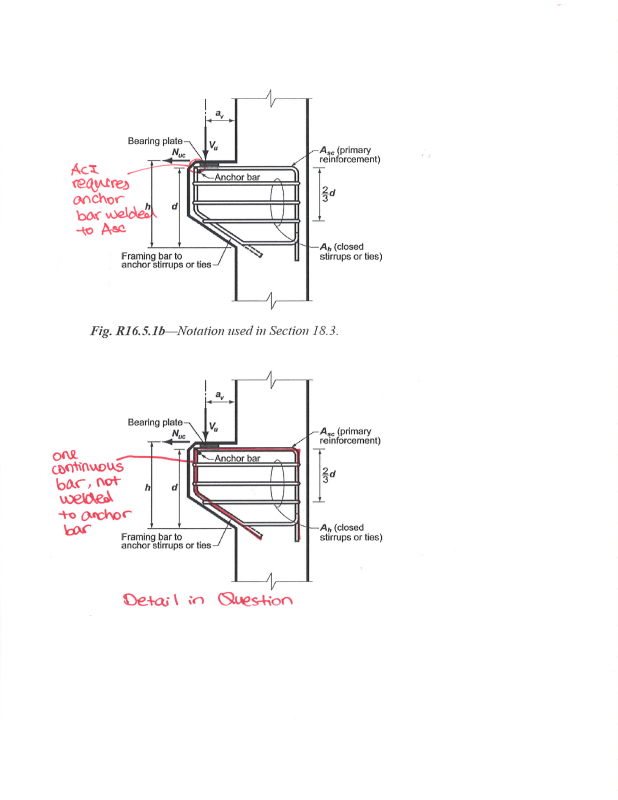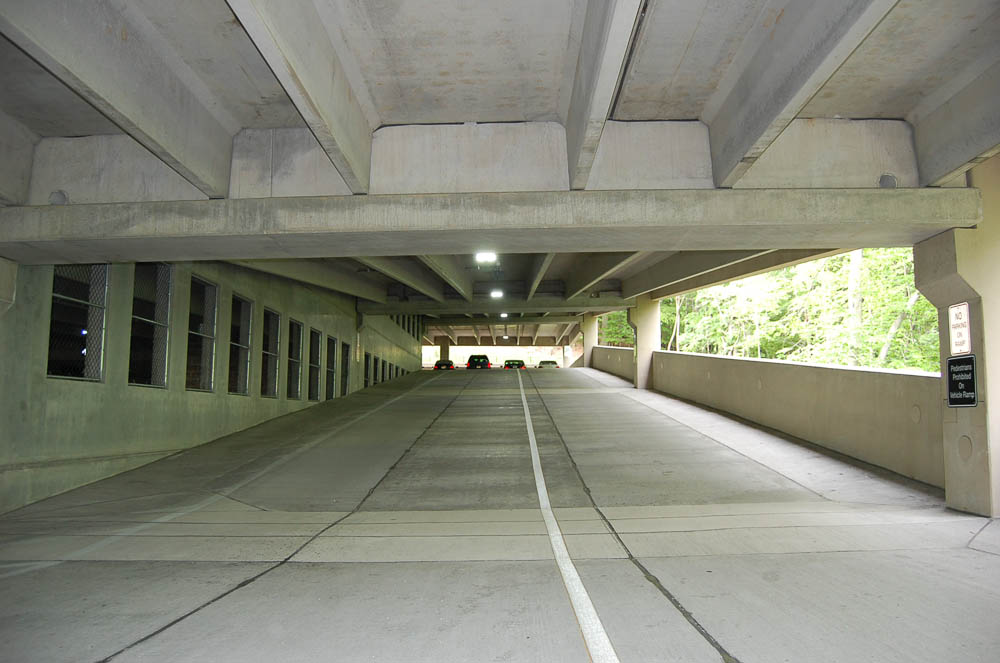Rainbowtrout
Structural
This detailing practice may be perfect OK. But I am suspicious since ACI doesn't have this. I am not sure what is wrong and therefore putting it out here for people to comment. Thanks!
Basically, the corbel has a continuous primary and framing bar. Both ends of the bar extend well into the supporting wall. There is an anchor bar at the outer end, but not welded to anything. My concern is anchorage of the primary bar. ACI states:
At the front face of a bracket or corbel, primary
tension reinforcement shall be anchored by (a), (b), or (c):
(a) A weld to a transverse bar of at least equal size that is
designed to develop fy of primary tension reinforcement
(b) Bending the primary tension reinforcement back to
form a horizontal loop
(c) Other means of anchorage that develops fy
Is there any reason why ACI doesn't have "integral" primary bar as a suggestion?
Thanks!
Basically, the corbel has a continuous primary and framing bar. Both ends of the bar extend well into the supporting wall. There is an anchor bar at the outer end, but not welded to anything. My concern is anchorage of the primary bar. ACI states:
At the front face of a bracket or corbel, primary
tension reinforcement shall be anchored by (a), (b), or (c):
(a) A weld to a transverse bar of at least equal size that is
designed to develop fy of primary tension reinforcement
(b) Bending the primary tension reinforcement back to
form a horizontal loop
(c) Other means of anchorage that develops fy
Is there any reason why ACI doesn't have "integral" primary bar as a suggestion?
Thanks!



